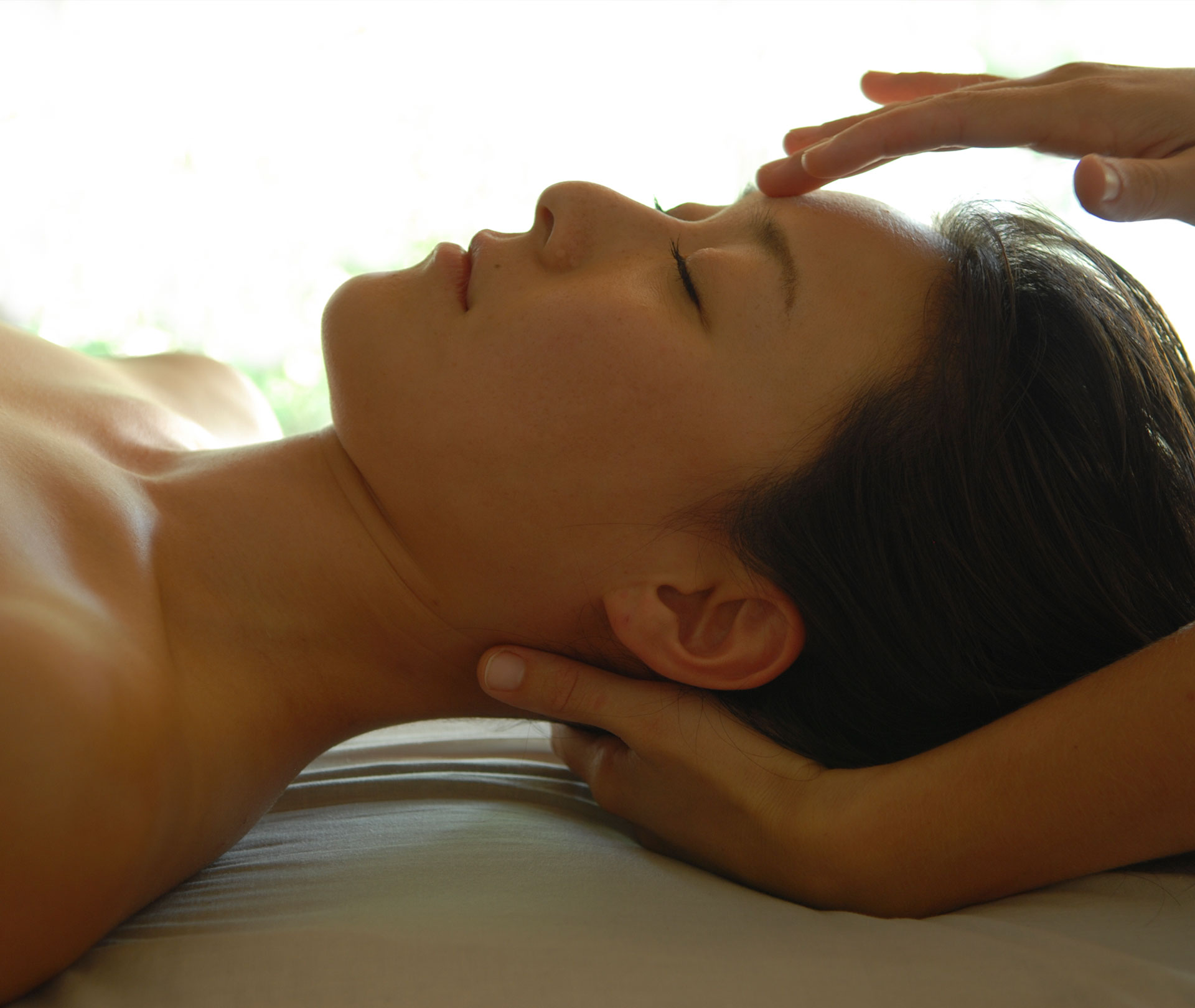Holistic Healing Services: A Comprehensive Guide
Holistic healing is an approach to wellness that considers the whole person—body, mind, spirit, and emotions—in the quest for optimal health and wellness. Rather than focusing solely on the symptoms of a disease, holistic healing aims to address the root causes, promoting balance and harmony within the entire system.
The term “holistic” comes from the Greek word “holos,” meaning “whole.” Holistic healing is based on the idea that the body has an innate ability to heal itself when given the right tools and environment. This philosophy has been practised in various forms for thousands of years, drawing from ancient traditions such as Ayurveda, Traditional Chinese Medicine (TCM), and Indigenous healing practices.
Mindfulness and Wellness Retreats: A Path to Rejuvenation and Inner Peace
In the modern world, holistic healing services have gained popularity as more people seek alternatives to conventional medicine. These services encompass a wide range of practices, from acupuncture and herbal medicine to energy healing and mindfulness meditation. This guide will explore the different types of holistic healing services, their benefits, and how to choose the right approach for your unique needs.
The Core Principles of Holistic Healing
Before diving into the various services, it’s essential to understand the core principles that underpin holistic healing:
- The Whole Person: Holistic healing emphasizes the interconnectedness of the body, mind, spirit, and emotions. A person’s health is seen as a reflection of the harmony between these aspects of their being.
- Prevention and Wellness: Holistic practitioners focus on preventing illness and promoting overall wellness rather than simply treating symptoms. This proactive approach often involves lifestyle changes, such as diet, exercise, and stress management.
- Natural Healing: Holistic healing relies on natural therapies and techniques that support the body’s ability to heal itself. This may include herbal remedies, nutritional counselling, and energy work.
- Individualized Care: Every person is unique, and holistic practitioners tailor their treatments to meet the specific needs of each individual. This personalized approach ensures that the root causes of health issues are addressed.
- Collaboration and Education: Holistic healing encourages collaboration between the practitioner and the patient. Education is a key component, empowering individuals to take an active role in their health and well-being.
Types of Holistic Healing Services
Holistic healing services encompass a broad spectrum of practices, each with its unique approach to wellness. Here are some of the most popular and widely recognized forms of holistic healing:
1. Acupuncture
Acupuncture is a cornerstone of Traditional Chinese Medicine (TCM) and has been practised for over 2,500 years. This technique involves the insertion of thin needles into specific points on the body, known as acupoints, to balance the flow of energy, or “Qi,” along the body’s meridians.
Benefits:
- Pain relief, particularly for chronic conditions such as arthritis, migraines, and back pain.
- Stress reduction and relaxation.
- Improved digestion and metabolism.
- Enhanced immune function.
- Treatment of various ailments, including anxiety, depression, and insomnia.
How It Works: Acupuncture is based on the belief that the body’s energy flows along pathways called meridians. When this energy becomes blocked or imbalanced, it can lead to illness. By stimulating specific acupoints, acupuncture helps restore the natural flow of energy, promoting healing and balance.
2. Herbal Medicine
Herbal medicine is one of the oldest forms of healing, with roots in many ancient cultures, including Chinese, Ayurvedic, and Indigenous traditions. This practice involves the use of plants, herbs, and botanical extracts to treat a wide range of health conditions.
Benefits:
- Natural, plant-based remedies with fewer side effects compared to synthetic drugs.
- Support for various bodily systems, including the immune, digestive, and respiratory systems.
- Treatment for chronic conditions such as allergies, skin disorders, and hormonal imbalances.
- Prevention of illness and promotion of overall wellness.
How It Works: Herbal medicine harnesses the medicinal properties of plants to support the body’s natural healing processes. Herbs can be used in various forms, including teas, tinctures, capsules, and topical applications. Each herb has specific therapeutic properties, and practitioners often create customized blends to address individual needs.
3. Reiki and Energy Healing
Reiki is a form of energy healing that originated in Japan in the early 20th century. It involves the transfer of universal life energy through the practitioner’s hands to the recipient, promoting physical, emotional, and spiritual healing.
Benefits:
- Deep relaxation and stress reduction.
- Emotional healing and release of negative energy.
- Support for the body’s natural healing processes.
- Balancing of the body’s energy centres, known as chakras.
- Relief from pain, anxiety, and depression.
How It Works: Reiki practitioners believe that energy flows through the body and that disruptions or blockages in this flow can lead to illness. During a Reiki session, the practitioner places their hands on or near the recipient’s body, channelling healing energy to restore balance and harmony.
Health Food and Beverage Brands: Pioneers of Wellness in the Modern Market
4. Mindfulness and Meditation
Mindfulness and meditation are practices that cultivate awareness and presence in the moment. These techniques have been used for centuries to promote mental clarity, emotional balance, and spiritual growth.
Benefits:
- Reduced stress and anxiety.
- Improved focus and concentration.
- Enhanced emotional regulation and resilience.
- Greater self-awareness and self-compassion.
- Support for mental health conditions such as depression and PTSD.
How It Works: Mindfulness involves paying attention to the present moment without judgment. This practice can be integrated into daily activities or cultivated through formal meditation sessions. Meditation, on the other hand, involves focused attention and mental training to achieve a state of calm and inner peace.
5. Chiropractic Care
Chiropractic care focuses on the diagnosis and treatment of musculoskeletal disorders, particularly those related to the spine. Chiropractors use hands-on spinal manipulation and other techniques to improve alignment, relieve pain, and enhance the body’s ability to heal itself.
Benefits:
- Relief from back pain, neck pain, and headaches.
- Improved mobility and flexibility.
- Enhanced nervous system function.
- Support for overall physical well-being.
- Prevention of injury and promotion of long-term spinal health.
How It Works: Chiropractic care is based on the principle that proper alignment of the spine is essential for optimal health. Misalignments, or subluxations, can interfere with the nervous system, leading to pain and dysfunction. By realigning the spine, chiropractic adjustments restore proper function and support the body’s natural healing processes.
6. Nutrition and Dietary Counseling
Nutrition plays a vital role in holistic healing, as the foods we eat directly impact our health and well-being. Holistic nutritionists provide personalized dietary advice to help individuals achieve optimal health through balanced, nutrient-rich diets.
Benefits:
- Improved energy levels and vitality.
- Support for weight management and healthy digestion.
- Prevention and management of chronic diseases such as diabetes, heart disease, and hypertension.
- Enhanced immune function and overall wellness.
- Education and empowerment to make informed food choices.
How It Works: Holistic nutritionists assess an individual’s dietary habits, health history, and lifestyle to create customized nutrition plans. These plans often include whole foods, supplements, and lifestyle recommendations to address specific health concerns and promote long-term wellness.

7. Massage Therapy
Massage therapy is a hands-on technique that involves the manipulation of soft tissues, including muscles, tendons, and ligaments. It is widely used for relaxation, pain relief, and overall well-being.
Benefits:
- Relaxation and stress reduction.
- Relief from muscle tension and pain.
- Improved circulation and lymphatic drainage.
- Enhanced flexibility and range of motion.
- Support for mental and emotional well-being.
How It Works: Massage therapy involves various techniques, such as Swedish massage, deep tissue massage, and trigger point therapy. The therapist uses their hands, fingers, and sometimes elbows or tools to apply pressure and manipulate the soft tissues. This promotes relaxation, improves circulation, and aids in the release of tension.
8. Aromatherapy
Aromatherapy is a holistic healing practice that uses essential oils extracted from plants to promote physical, emotional, and spiritual well-being. These oils can be inhaled, applied topically, or used in baths to enhance health and wellness.
Benefits:
- Stress relief and relaxation.
- Improved mood and emotional balance.
- Support for respiratory health and immune function.
- Relief from headaches, insomnia, and other ailments.
- Enhancement of the body’s natural healing processes.
How It Works: Essential oils contain concentrated plant compounds that have therapeutic properties. Aromatherapy harnesses these properties to influence the body’s systems, including the nervous, immune, and respiratory systems. The scents of essential oils can also have a profound impact on mood and emotions, making aromatherapy a powerful tool for mental and emotional healing.
Fitness Training and Coaching: A Comprehensive Guide to Achieving Your Goals
9. Ayurveda
Ayurveda is a holistic healing system that originated in India over 5,000 years ago. It is based on the belief that health is achieved through a balance of the mind, body, and spirit. Ayurveda emphasizes the importance of lifestyle, diet, and natural therapies in maintaining health and preventing disease.
Benefits:
- Customized treatment plans based on individual constitution (dosha).
- Support for digestion, metabolism, and detoxification.
- Prevention and treatment of chronic conditions.
- Promotion of mental clarity and emotional balance.
- Enhancement of overall well-being and longevity.
How It Works: Ayurveda is centred around the concept of doshas—three fundamental energies (Vata, Pitta, and Kapha) that govern the body’s functions. Each person has a unique combination of these doshas, and imbalances can lead to illness. Ayurvedic practitioners assess an individual’s dosha and recommend dietary changes, herbal remedies, and lifestyle adjustments to restore balance.
10. Yoga and Movement Therapies
Yoga and movement therapies are holistic practices that combine physical postures, breathwork, and meditation to promote physical, mental, and spiritual well-being. These practices have been used for thousands of years to enhance flexibility, strength, and inner peace.
Benefits:
- Improved flexibility, strength, and balance.
- Enhanced mental clarity and focus.
- Stress reduction and emotional healing.
- Support for physical rehabilitation and chronic pain management.
- Promotion of overall health and wellness.
How It Works: Yoga involves a series of postures (asanas) and breathing techniques (pranayama) that align the body and mind. Movement therapies, such as Tai Chi and Qigong, use gentle, flowing movements to promote energy flow and balance. These practices are often combined with meditation to create a holistic approach to wellness.
The Benefits of Holistic Healing Services
Holistic healing services offer numerous benefits that extend beyond the treatment of specific health conditions. Here are some of the key advantages of incorporating holistic healing into your wellness routine:
- Personalized Care: Holistic practitioners take the time to understand your unique needs and create customized treatment plans that address the root causes of your health concerns.
- Natural and Non-Invasive: Holistic therapies are often natural and non-invasive, reducing the risk of side effects and promoting gentle, effective healing.
- Prevention and Wellness: Holistic healing emphasizes prevention and overall wellness, helping you maintain good health and avoid chronic conditions.
- Mind-Body Connection: Holistic services recognize the importance of the mind-body connection, addressing both physical and emotional aspects of health.
- Empowerment and Education: Holistic practitioners empower you with the knowledge and tools to take an active role in your health and well-being.
- Support for Chronic Conditions: Many holistic therapies are effective in managing chronic conditions, offering relief and improving quality of life.
- Complementary to Conventional Medicine: Holistic healing can complement conventional medical treatments, providing a well-rounded approach to health care.
How to Choose the Right Holistic Healing Service
With so many holistic healing services available, it can be challenging to determine which approach is right for you. Here are some tips to help you make an informed decision:
- Assess Your Needs: Consider your health goals and concerns. Are you looking for stress relief, pain management, or support for a chronic condition? Understanding your needs will help you narrow down your options.
- Research Practitioners: Look for qualified practitioners with experience in the specific modality you’re interested in. Check their credentials, read reviews, and ask for recommendations.
- Consider Your Comfort Level: Choose a therapy that resonates with you and feels comfortable. For example, if you’re not comfortable with needles, acupuncture may not be the best choice.
- Start Small: If you’re new to holistic healing, start with a single service and see how it works for you. You can always explore other modalities later.
- Consult Your Healthcare Provider: If you have any medical conditions or are taking medications, consult your healthcare provider before starting a new holistic therapy to ensure it’s safe and appropriate for you.
Embracing Holistic Healing
Holistic healing services offer a comprehensive approach to wellness that addresses the whole person—body, mind, spirit, and emotions. By focusing on prevention, natural healing, and personalized care, these services can help you achieve optimal health and well-being. Whether you’re seeking relief from a specific condition or looking to enhance your overall quality of life, holistic healing provides a powerful and effective path to wellness.
Health and Wellness Business Ideas: A Pathway to Profitable Ventures and Positive Impact





Post Comment